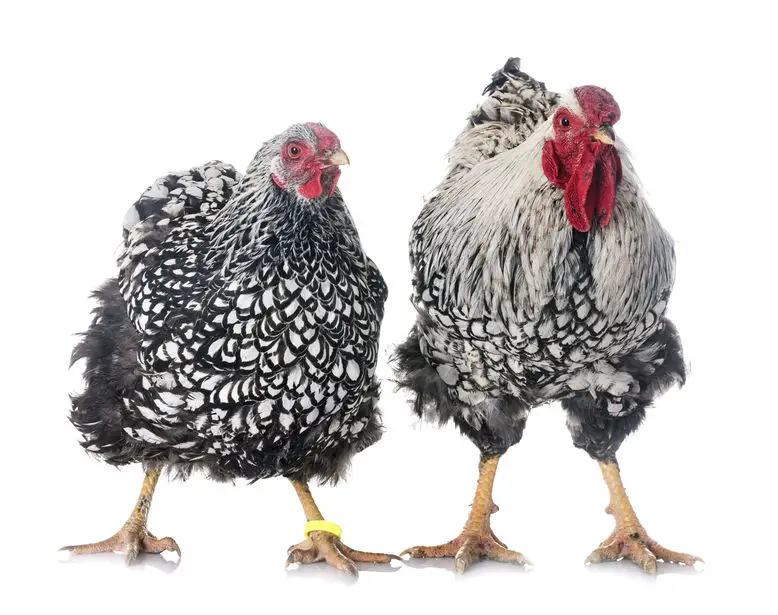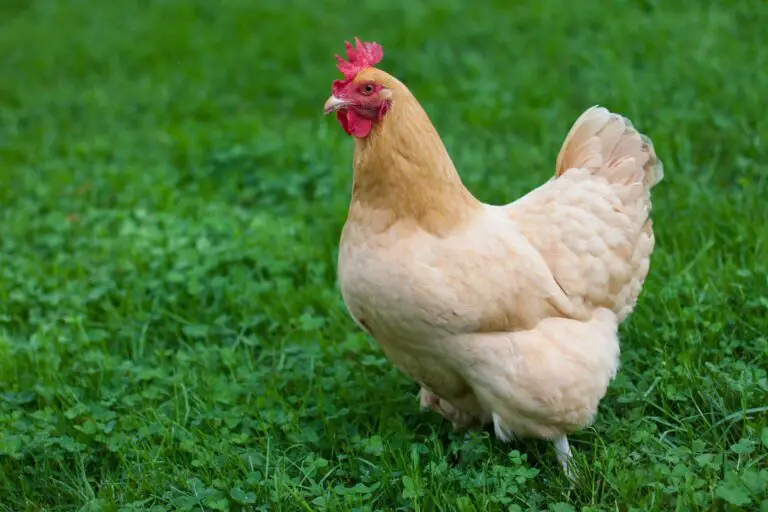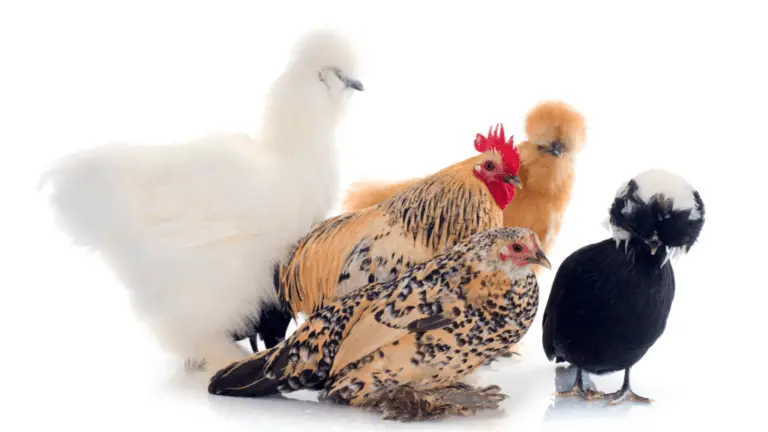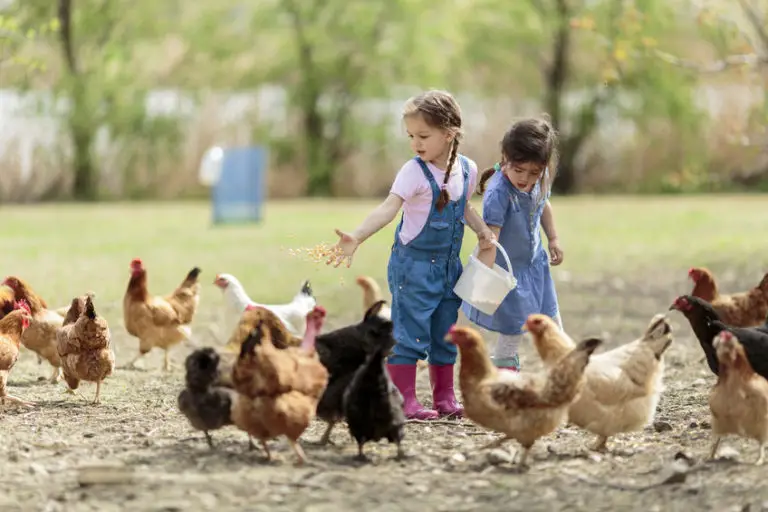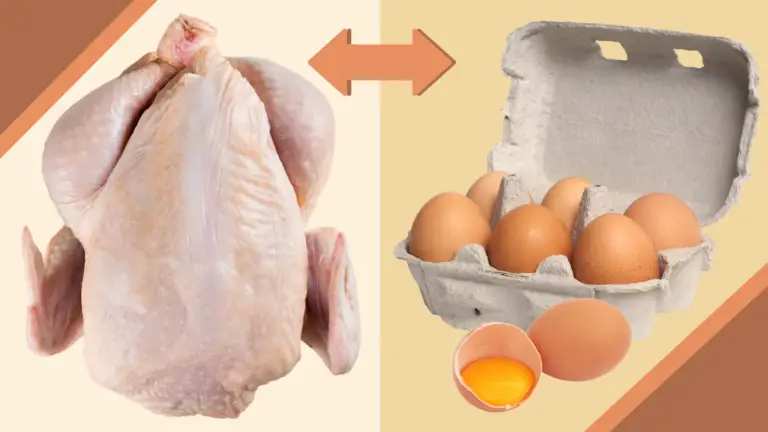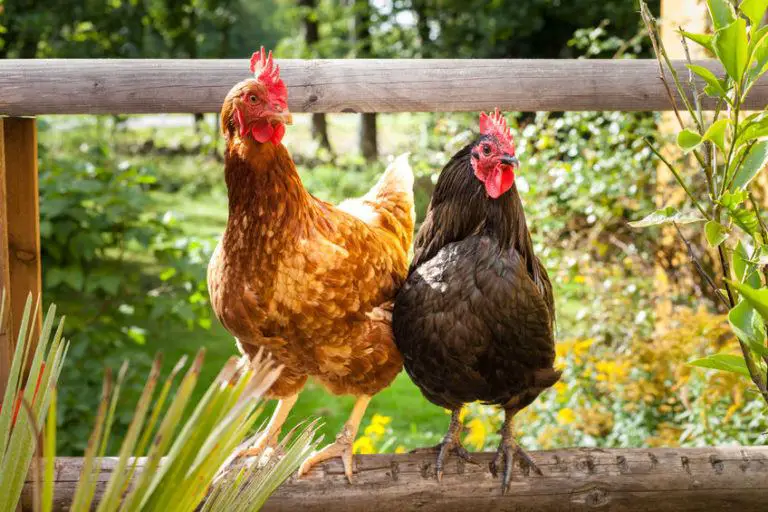Wyandotte Chicken Breeds – Everything You Need To Know!
Looking for a sweet, kid friendly, brown egg-laying, beautiful chicken breed? How about the Wyandotte! The Wyandotte chicken breeds are all-American. One of the first dual-purpose breeds created in America and these chickens have been proven to be very valuable.
Wyandottes can withstand harsh winters, lay 3 to 4 large eggs each week, and stay primarily healthy throughout it all. The Wyandotte chicken breed might be perfect for you if you have kids or are wanting a breed that can go broody at times.
If you’re interested in buying one of these friendly chickens or just want to know more about this popular breed, here’s everything you need to know about the Wyandotte chicken breed.
Overview
The Wyandotte chicken is a large breed that comes in many different colors and patterns. However, their red rose comb is a distinctive feature in all the chickens.
Wyandotte Characteristics
We list a few of the main attributes below. It’s by no means an exhaustive list, but provides an in-depth look at this wonderful breed!
Color: Wyandotte Chickens come in various colors including silver laced, golden laced, blue laced red, buff laced, black, blue, partridge, etc.
Size: Hen (6lb) and Rooster (9lb)
Lifespan: 5-12 years
Temperament:
- Quiet & reserved
- Known for mainly hanging out with their own breed exclusively
- Refused to be pushed around by other chickens
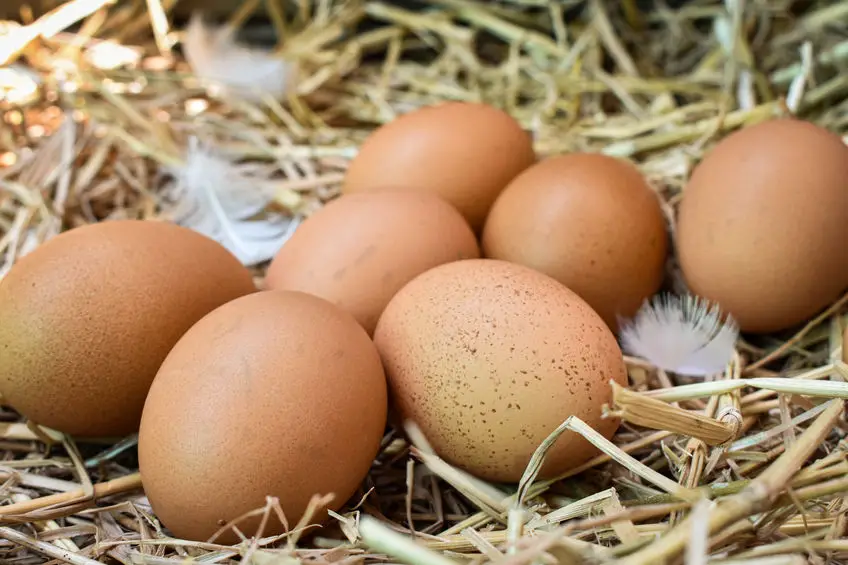
Eggs:
- Production: 200/year (4/week)
- Won’t start laying eggs until 20 weeks old
- Color: light brown or cream
- Size: large
- Broodiness: can be broody
Hardiness:
- Cold-hardy
Pecking Order:
- Due to their silent dominance, they are usually high in the pecking order
History
Wyandotte Chickens were created in the late 1800s, they were bred in the northern climates of Michigan & New York for the purpose of withstanding brutal winters. One of the first American breeds to be produced was the Silver laced Wyandotte.
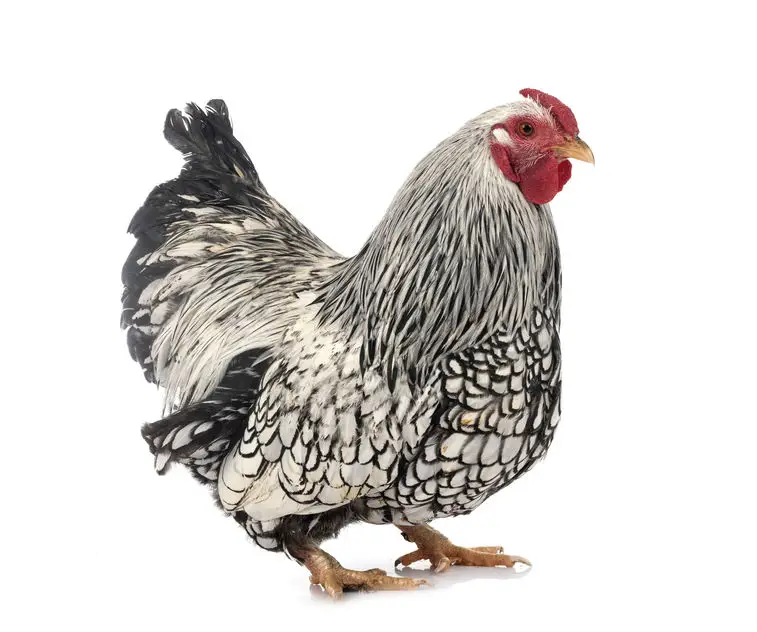
The exact mixture of the Wyandotte is unknown but it has been determined that the chicken was a mixture of multiple breeds. The mixture includes Brahmas and Hamburgs as contributors.
The chickens were specifically bred to have a rose comb because the rose comb doesn’t suffer from frostbite and can handle cold weather very well.
Until the introduction of Industrial farming, Wyandotte chickens were considered the ideal choice of American bird for a northern climate. With the establishment of newer hybrids, Wyandottes were not able to compete with the new breeds. Although there has been a decline in the past, dedicated breeders have been able to keep a steady production of these birds.
Recently, the Wyandotte chickens have made enough of a revival to get taken out of the Livestock Conservancy’s priority list and are not considered endangered anymore.
Health Conditions
The Wyandotte chickens are mainly known as a strong and healthy breed. Luckily, they are mostly disease-free. However, like all chickens, you will still need to have regular health checks for things like lice, mites, and worms.
Hatching
Normally, nature should do the work if you have a rooster and a hen. You most likely will have fertile eggs from this pair.
Most Wyandottes start laying eggs at 20 weeks. Which might seem long but their large eggs make it well worth the wait! The Wyandottes have a reputation for being good mothers to their chickens. They tend to take care of their chickens until they are old enough to be independent.
Furthermore, Wyandotte chicken can be broody, this can be of use if you’re trying to hatch your own eggs.
If, on the off chance, you don’t have a broody hen, you can buy a fertilized egg and put it in an incubator. Remember to be careful about where you buy your fertilized eggs from – especially if you buy them online – so you can avoid purchasing from hatcheries that might neglect their chickens.
You can read more about hatching eggs here.
Wyandotte Chicken Pictures
We are including a few pictures of the various Wyandotte types below. They are a beautiful breed!
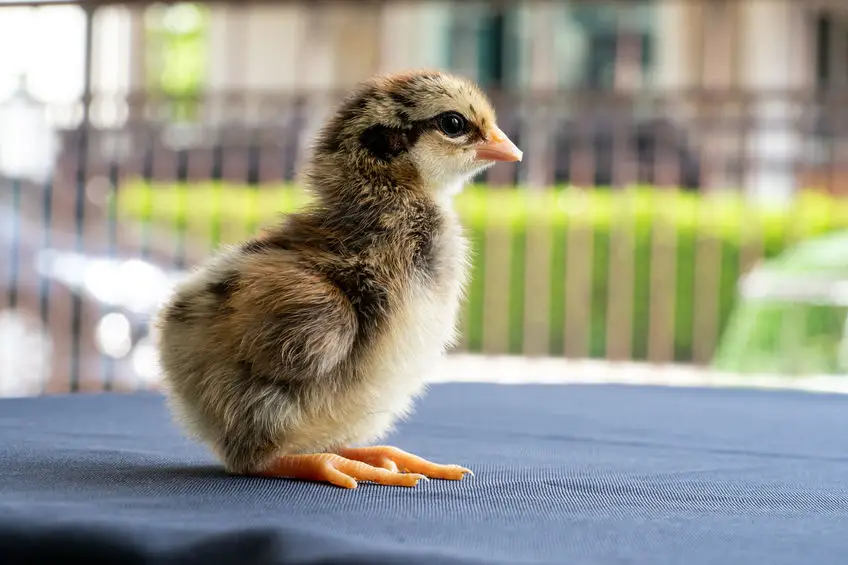
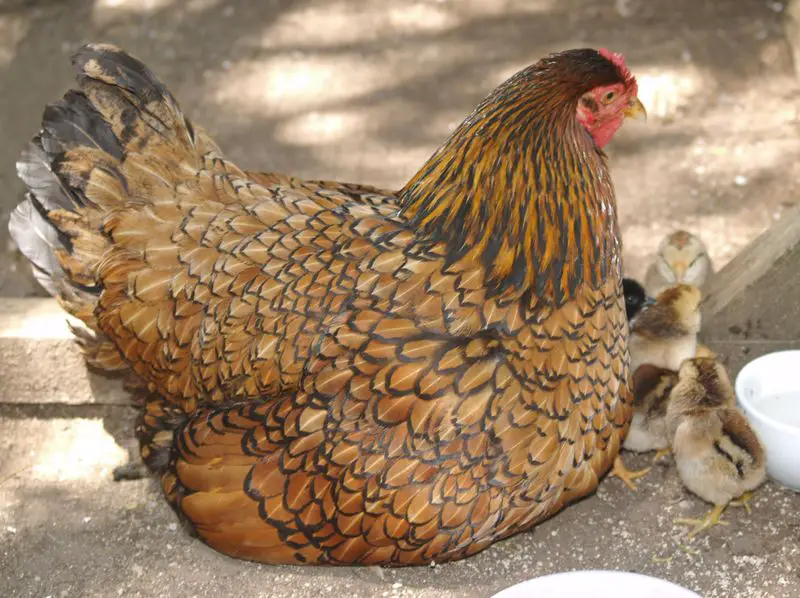
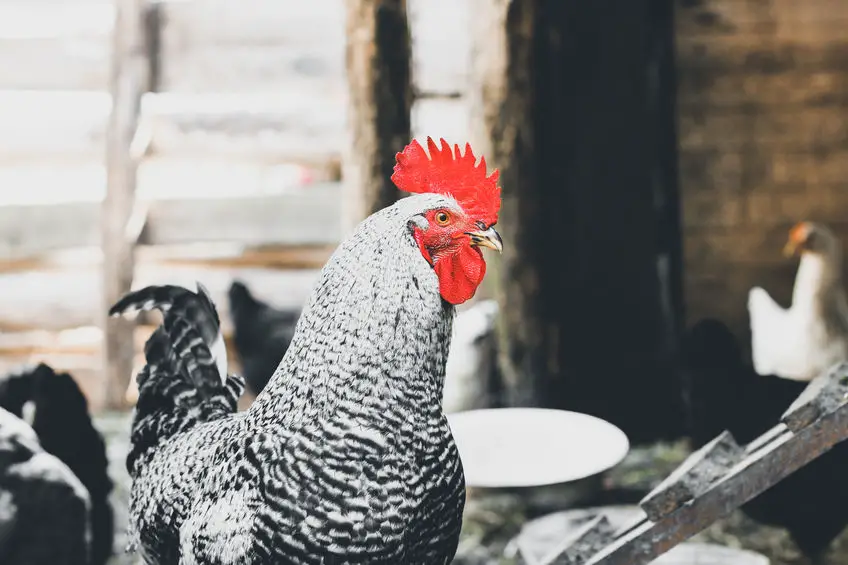

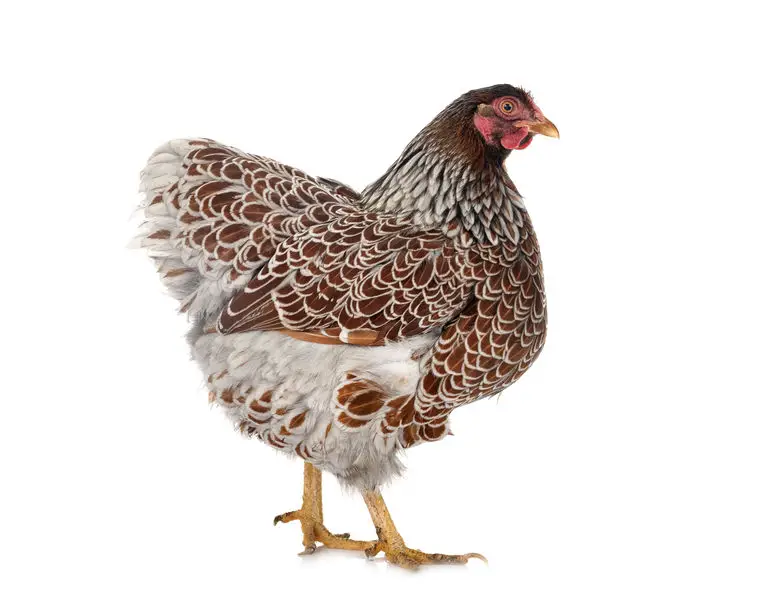
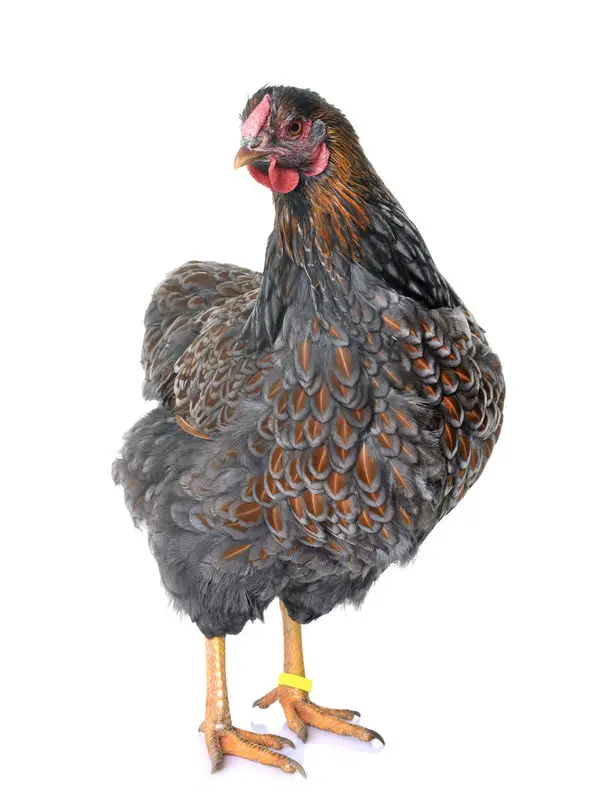
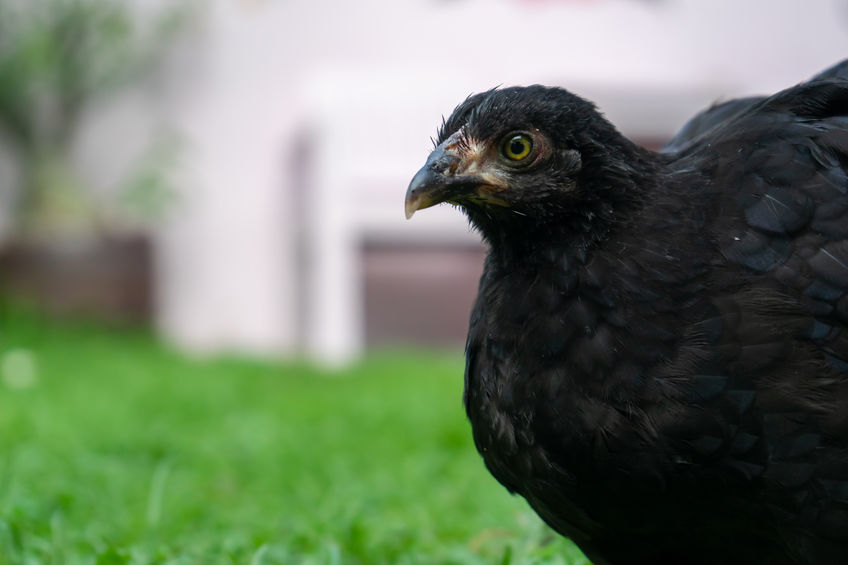
Pros & Cons
Pros
- Great layers
- Their broodiness can be helpful if you’re trying to hatch your own eggs
- Friendly around children
- Can survive brutal northern winters
- Broad color spectrum
- Very active
Cons
- Not overly affectionate
- They don’t tolerate hot weather very well
- Don’t do well in small spaces and prefer to roam large areas
Frequently Asked Questions
“Are Wyandotte chickens noisy?”
Wyandottes actually have a reputation for being a quiet chicken. This makes them a recommended chicken if you live close to your neighbors or in an urban area.
“Are Wyandottes aggressive?”
While Wyandottes aren’t exactly ‘lap chicken’, they are still friendly to their owners. They are not aggressive but not overly affectionate either. If you have children, you shouldn’t have to worry about Wyandottes being aggressive towards your kids.
“How much does it cost to buy a Wyandotte chicken?”
Prices may vary but the average price range is $2.00 to $4.00 per chick.
Keep in mind it’s always recommended to buy your chick from a breeder rather than a store. Nonetheless, if you do purchase a chick from a local store and are wondering where it came from, you should ask the staff.
“What should I feed my Wyandotte chicken?”
For chicks, it’s recommended to give them a feed designed for meat birds because of its high level of protein and nutrients. Chicks can also eat fresh leafy greens as long as there are no harmful organisms, chemicals, bird droppings, or pesticides on them.
To see what plants chickens can eat, and should NOT eat, see this article.
Adults, on the other hand, can eat basic laying feeds. To make stronger eggshells by promoting the calcium in their diet, you can consistently offer oyster shells to your chickens. Fresh greens, fruit, insects, and table scraps are also recommended. You can also feed old egg shells.
You can find out more about the many types of chicken feed here. If you are wanting to feed your flock a high quality scratch you can make from home, see our recipe!
Our Experience
We’ve been raising chickens for many years, nearly all of which are a variety of different egg layers. We often keep a Wyandotte or two in our mix of egg laying breeds.
We can vouch for it’s docile personality, similar to the Buff Orpington. Our kids, even when they were little, could always pick them up, pet them, and handle them without concern. This was a big relief to us since we wanted the kids to be near the flock but never wanted any of them to get hurt in any way.
Having only hens, we cannot say as much about Wyandotte roosters. We hope that they would be as docile as their female counterparts but that’s not always the case. To learn more about roosters, see this article.
As for egg laying, they are awesome, and among our top producers of lovely brown eggs every year.
The only drawback I see with the breed is it’s size. They are a larger framed chicken so eat more than some of our smaller breeds like Leghorns or other mid size chickens.
But really, we don’t mind because they are a fantastic breed. That, and we LOVE seeing those beautiful Wyandottes out frolicking with the rest of the flock.
As mentioned earlier, they can go broody as well. Over the years we’ve owned them, we’ve had a handful of our Wyandottes get broody. Since we had a rooster at the time, we took full advantage of the situation and hatched some chicks! They proved to be wonderful mothers as well.
Wyandottes are known as a dual purpose breed but we have not processed any of ours so can’t speak to that aspect.
Conclusion
In summary, the Wyandotte chicken breed is ideal for owners who are living in any climate, want large eggs, and don’t mind their chickens being a little quiet. Also being able to look at their various beautiful feathers and patterns is also a major plus!
These chickens have already proven their staying power by making enough of a comeback to no longer be considered endangered anymore. They are certainly a resilient breed to have.
Wyandottes may not be the most prolific egg layer, like the Novagens, but are a productive and wonderful breed to consider having in your flock.
Overall, the Wyandotte chicken is the perfect beginner breed. They are low maintenance and easy to take care of. We highly recommend this popular chicken. For a list of other beginner friendly breeds, read this article.
Thanks for stopping in and happy “chickening!”

